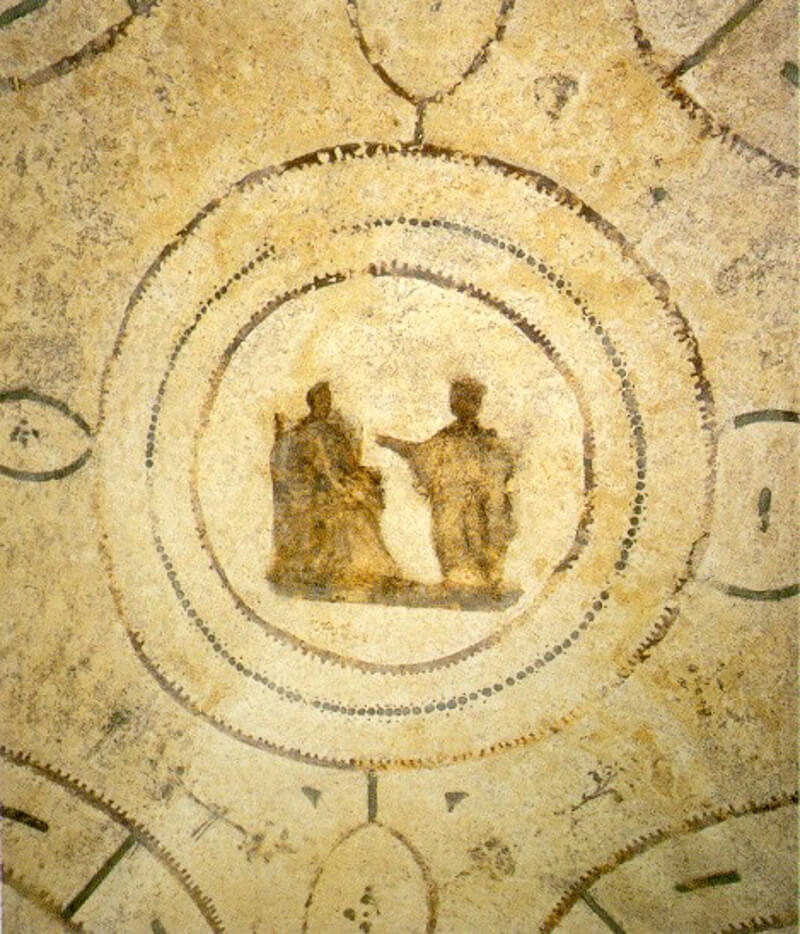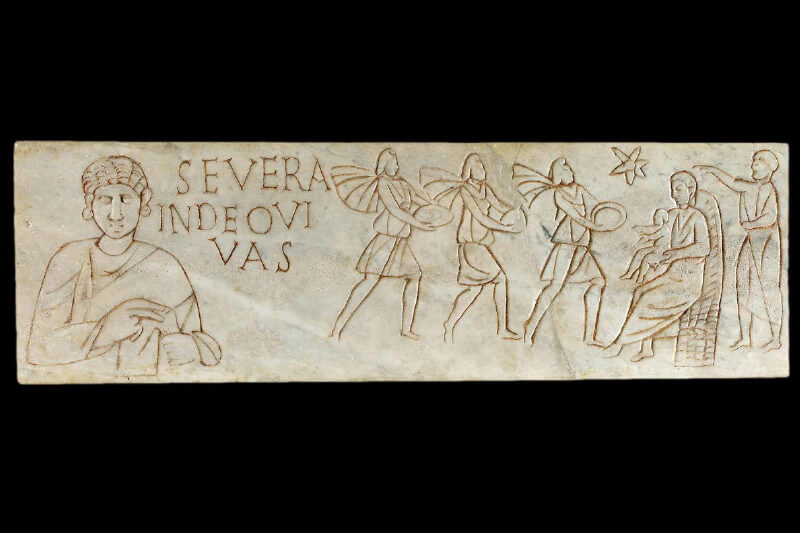
Marian Art

The Annunciation
Rome (c. 2nd century)
The protoevangelium of Genesis 3:15 makes clear from the dawn of salvation history the role that the Woman, the mother of the Redeemer, would have in God’s eternal plan for our salvation. Of course, we know that Woman to be Mary.
From its institution, the Church has understood and honored Christ’s Mother for her importance on Earth and in heaven. In seeking Truth through beauty, the Church has always incorporated her image in its teaching, devotional life, and in the liturgy itself. Few images of Mary or even Christ remain extant from those earliest centuries of persecution, but one striking image comes down to us from the Roman catacombs as a reminder of her pivotal place in the eyes of God and His people: this image of The Annunciation.
It is significant to note that perhaps the oldest surviving image of the Blessed Virgin does not depict the Nativity or her place at the foot of Christ’s cross, but the very moment of the Incarnation.
Before the Church Fathers had settled on the canon of Scripture, Mary’s greeting by the Archangel Gabriel as “blessed among women” was painted on the arched ceiling of the Catacomb of Priscilla. Once a rock quarry, this catacomb was used as a place of Christian burial for seven early popes and many martyrs beginning as early as the 2nd century. This decorative ceiling seems to date from the beginning of Christian usage – so early in fact, that some art historians doubt it shows Mary at all, though this same catacomb gives us some of the earliest paintings of the Madonna and Child and Christ the Good Shepherd.
The image is certainly Roman in style, but decay has stolen many of the details. What can we glean from what remains? Look carefully: A woman enthroned and crowned with a regal diadem, being addressed by an honored figure with a rudimentary halo standing bold upright before her and addressing her directly.
In the context of early Christian art, this makes perfect sense. In this image you can hear “Hail, full of grace, the Lord is with thee: blessed art thou among women” and young Mary the teenaged virgin betrothed to Joseph is seen by all who witness the sacrifice as the very Queen of Heaven whose fiat was uttered as the Word became flesh in her womb.

Adoration of the Magi
Vatican Museums (c. early 4th century)
The Gospel narrative surrounding the Magi is not at all the fixation of medieval art that many modern scholars imply. In addition to the historical accounts of their journey found in Sacred Scripture, the Magi story is recounted in some of the earliest art and literature of the Christian Tradition and its oldest depictions further solidify the Church’s consistent witness to Mary’s honored role in the redemptive life of Christ.
Among the treasures of the Vatican Museums is this small slab (late third to early fourth century) from the cemetery of Priscilla. It is likely from the tomb of a child and bears an inscription wishing for the deceased to “Live in God!” Three figures in Eastern apparel, traveling in haste with their capes flying, are led by the star to Mary, who is seated on an elaborate high wicker chair, with the baby Jesus in her arms. Behind her seat is not St. Joseph, but the prophet Bàlaam, indicating the star, and thus the Messianic prophecy: “A star shall rise out of Jacob, a scepter shall spring up out of Israel” (Num 24:17). Kings from afar themselves are paying homage to the newborn King in the arms of His Queen Mother. Mary is not merely the mother of the human child Jesus, but part of a divine plan for salvation prophesied from the earliest of Scripture.
COMING SOON: More artwork featuring Mary in this series created by Tricia Kent, a parishioner of St. Thomas Aquinas Catholic Church in Charlotte.
